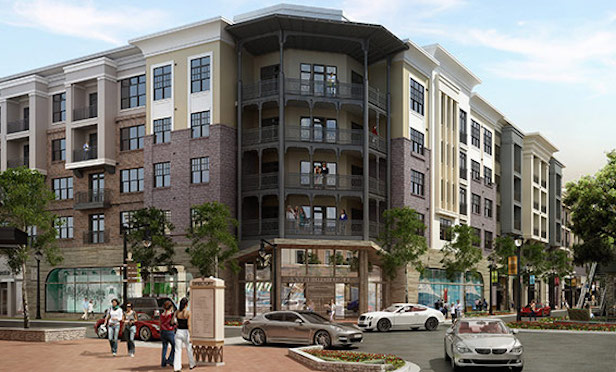
WASHINGTON, DC—Less celebrated than urban neighborhoods, yet more diversified, and diverse, than they're often given credit for being, US suburbs still house the lion's share of population. They've also driven the growth within their metropolitan areas: between 2000 and 2015, suburban areas accounted for 91% of the population growth and 84% of the household growth in the top 50 metro areas, according to the Urban Land Institute.
A new report from ULI, Housing in the Evolving American Suburb, makes the case that dividing metro areas into “the city” and “the suburbs” is an oversimplification. Using methodology developed by RCLCO for ULI's Terwilliger Center for Housing, the report identifies five distinct types of suburb within the 50 largest metro areas.
The five types, according to the ULI report, are “Established High-End,” “Stable Middle-Income,” “Economically Challenged,” “Greenfield Lifestyle” and “Greenfield Value.” Within each type of suburb may be found “multiple types of potential housing and mixed-use development sites, although some types of sites are more common than others within a given type of suburb,” the report states.
Moreover, as there are distinctions between types of suburban community, there are also differences in the suburbs' relationships to the central cities. For example, ULI notes that the median home value in urban areas nationwide is $365,000 compared to $305,000 in suburban areas. However, while this ratio may hold true in the New York City metro area, suburbs in the central US generally have higher home values than cities.
Although the ascendancy of American suburbs starting after World War II occurred largely at the expense of cities, the recent revitalization of urban centers is, in many instances, complementary to the continued strength of their suburbs, says Stockton Williams, executive director of the Terwilliger Center. “Suburban housing dynamics increasingly reflect some of the most profound issues shaping our society, including aging, immigration, economic mobility, and evolving consumer preferences,” he says. “As a result, suburbs will generate substantial residential development and redevelopment opportunities and challenges in the years ahead.”
During a panel discussion at ULI's Fall Meeting in Dallas this past October, Adam Ducker, managing director at real estate advisory firm RCLCO, observed, “'Suburb' does not have to be viewed as a dirty word, because it's not.” In connection with ULI's new report, Ducker says, “What's happening in America's urban places is very exciting and important, but this report pulls back the lens and presents a much broader view and a better framework for understanding where people actually live in this country. The suburbs have evolved far beyond the monolithic bedroom community of our imagination, and this report is the first to deal with them fully, and on their own terms, in a long time.”
The report argues that even with urban revitalization ongoing, with some suburbs becoming more closely integrated with their city cores, a large number of suburban areas remain distinct enough to warrant analysis in their own right. ULI engaged Washington, DC-based RCLCO to conduct the analysis and generate actionable information for business leaders and local officials that could help shape the future of American suburbs.
Healthy regions and fully functioning housing markets require a range of housing choices for households of different backgrounds, means, desires and stages of life, the report states. Some of these options will reflect preferences among a growing number of Americans for denser, more walkable communities. Other suburbs will serve continuing demand for new single-family homes in more traditional auto-oriented areas, particularly to the extent they can be provided more affordably and near jobs. And still others will, out of both choice and necessity, offer lower cost workforce housing, to include rental units as well as for-sale product.

WASHINGTON, DC—Less celebrated than urban neighborhoods, yet more diversified, and diverse, than they're often given credit for being, US suburbs still house the lion's share of population. They've also driven the growth within their metropolitan areas: between 2000 and 2015, suburban areas accounted for 91% of the population growth and 84% of the household growth in the top 50 metro areas, according to the Urban Land Institute.
A new report from ULI, Housing in the Evolving American Suburb, makes the case that dividing metro areas into “the city” and “the suburbs” is an oversimplification. Using methodology developed by RCLCO for ULI's Terwilliger Center for Housing, the report identifies five distinct types of suburb within the 50 largest metro areas.
The five types, according to the ULI report, are “Established High-End,” “Stable Middle-Income,” “Economically Challenged,” “Greenfield Lifestyle” and “Greenfield Value.” Within each type of suburb may be found “multiple types of potential housing and mixed-use development sites, although some types of sites are more common than others within a given type of suburb,” the report states.
Moreover, as there are distinctions between types of suburban community, there are also differences in the suburbs' relationships to the central cities. For example, ULI notes that the median home value in urban areas nationwide is $365,000 compared to $305,000 in suburban areas. However, while this ratio may hold true in the
Although the ascendancy of American suburbs starting after World War II occurred largely at the expense of cities, the recent revitalization of urban centers is, in many instances, complementary to the continued strength of their suburbs, says Stockton Williams, executive director of the Terwilliger Center. “Suburban housing dynamics increasingly reflect some of the most profound issues shaping our society, including aging, immigration, economic mobility, and evolving consumer preferences,” he says. “As a result, suburbs will generate substantial residential development and redevelopment opportunities and challenges in the years ahead.”
During a panel discussion at ULI's Fall Meeting in Dallas this past October, Adam Ducker, managing director at real estate advisory firm RCLCO, observed, “'Suburb' does not have to be viewed as a dirty word, because it's not.” In connection with ULI's new report, Ducker says, “What's happening in America's urban places is very exciting and important, but this report pulls back the lens and presents a much broader view and a better framework for understanding where people actually live in this country. The suburbs have evolved far beyond the monolithic bedroom community of our imagination, and this report is the first to deal with them fully, and on their own terms, in a long time.”
The report argues that even with urban revitalization ongoing, with some suburbs becoming more closely integrated with their city cores, a large number of suburban areas remain distinct enough to warrant analysis in their own right. ULI engaged Washington, DC-based RCLCO to conduct the analysis and generate actionable information for business leaders and local officials that could help shape the future of American suburbs.
Healthy regions and fully functioning housing markets require a range of housing choices for households of different backgrounds, means, desires and stages of life, the report states. Some of these options will reflect preferences among a growing number of Americans for denser, more walkable communities. Other suburbs will serve continuing demand for new single-family homes in more traditional auto-oriented areas, particularly to the extent they can be provided more affordably and near jobs. And still others will, out of both choice and necessity, offer lower cost workforce housing, to include rental units as well as for-sale product.
© 2025 ALM Global, LLC, All Rights Reserved. Request academic re-use from www.copyright.com. All other uses, submit a request to [email protected]. For more information visit Asset & Logo Licensing.






